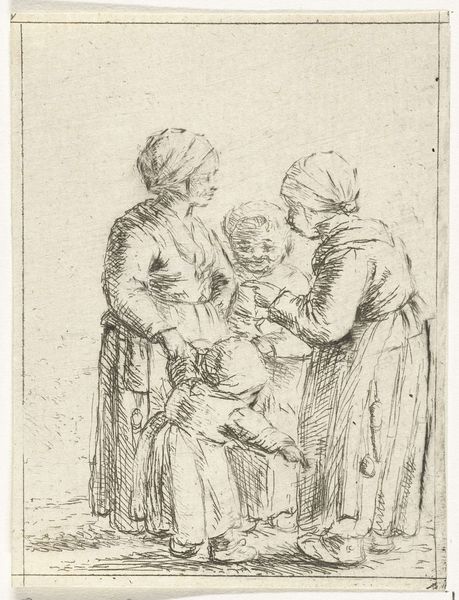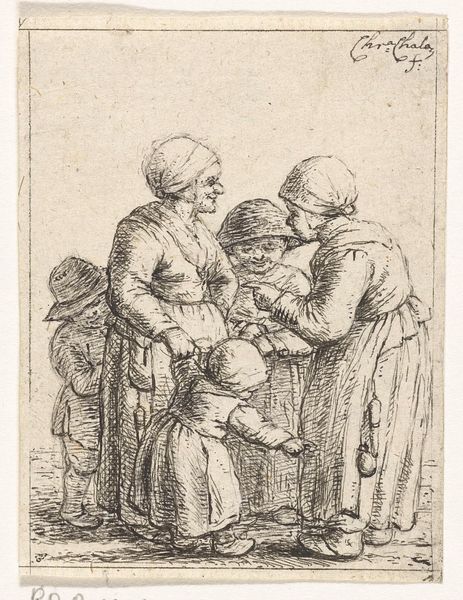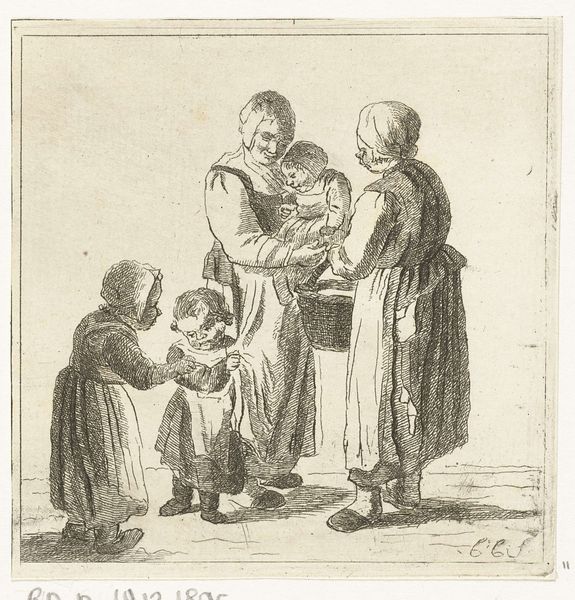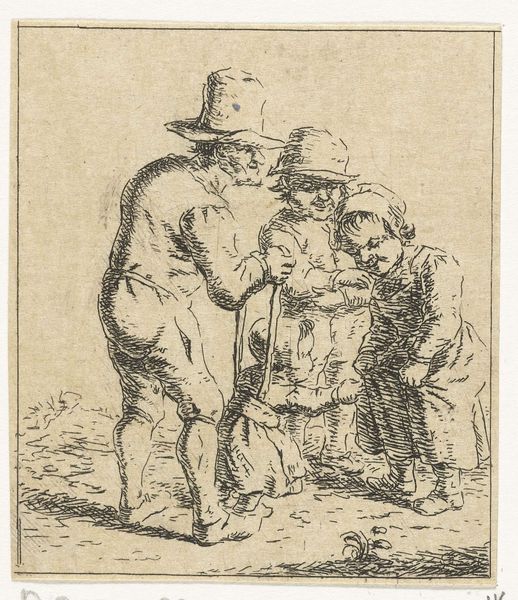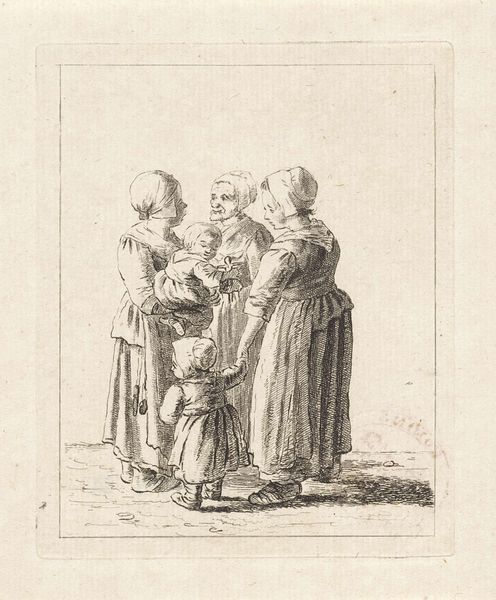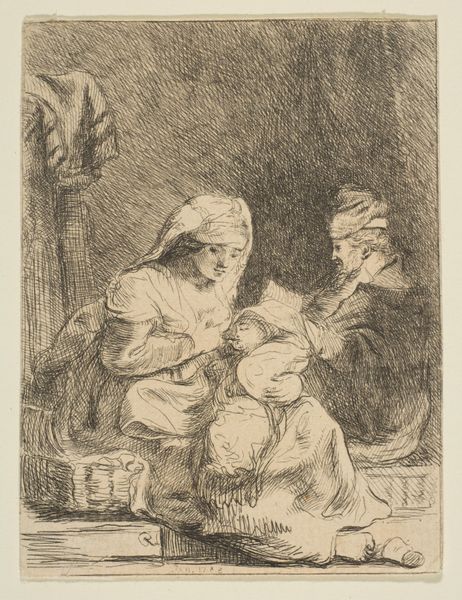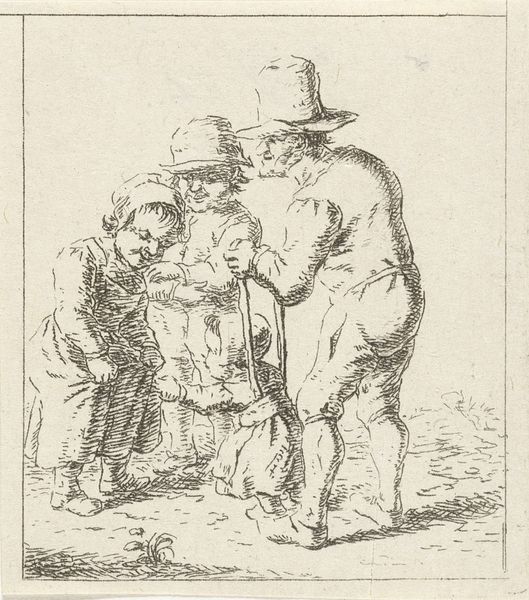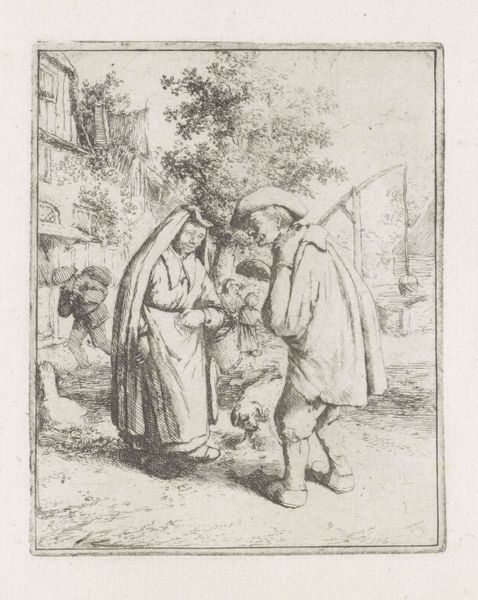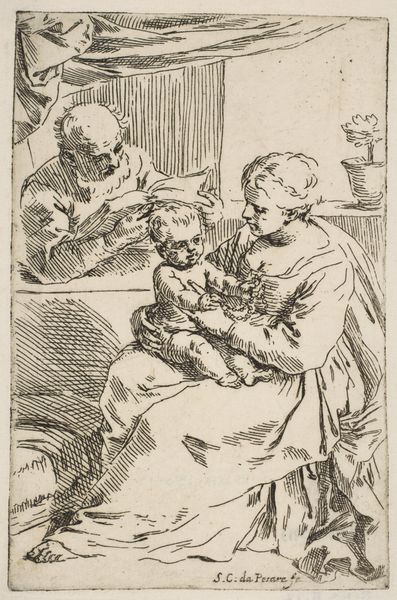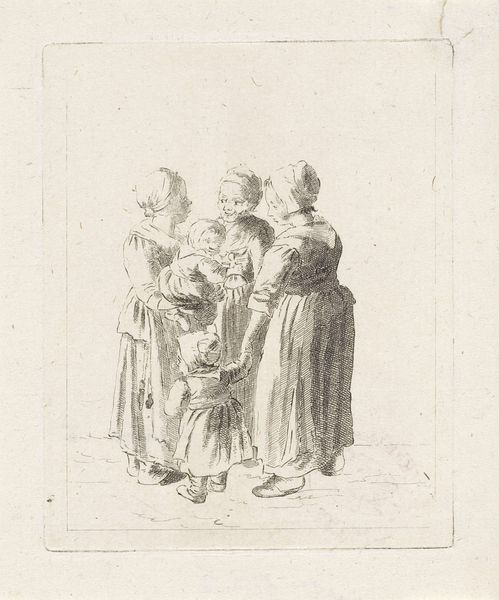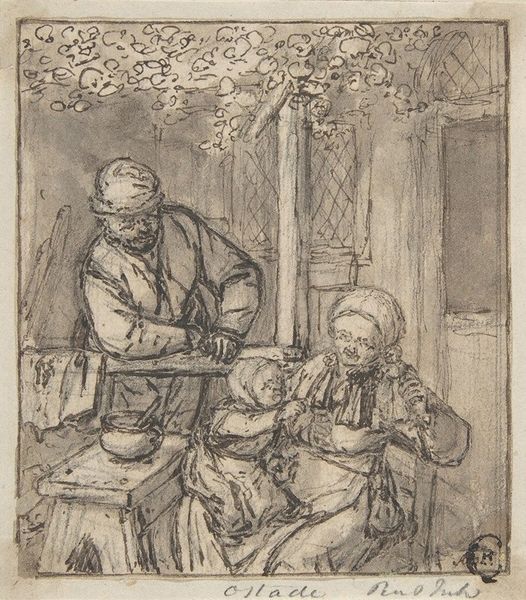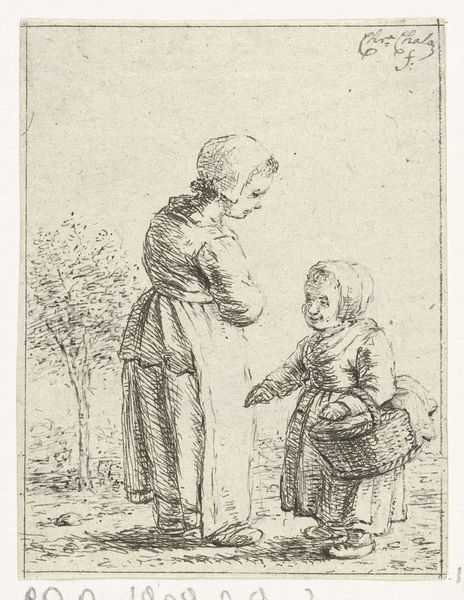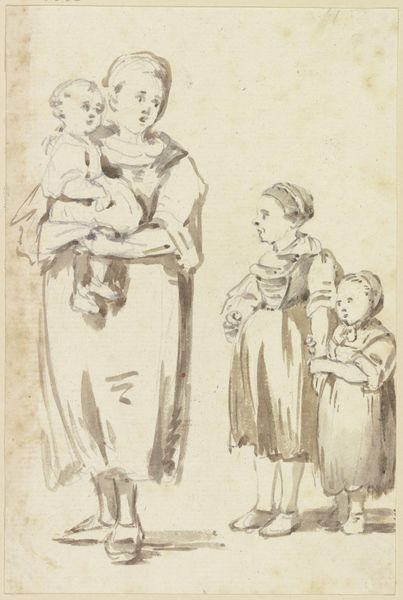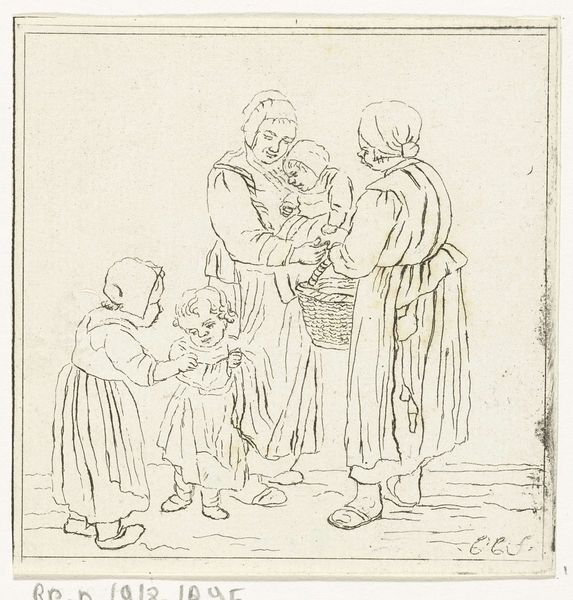
drawing, paper, ink
#
portrait
#
drawing
#
figuration
#
paper
#
ink
#
genre-painting
#
history-painting
Dimensions: height 75 mm, width 55 mm
Copyright: Rijks Museum: Open Domain
Editor: This drawing, "Drie vrouwen in gesprek," or "Three Women Conversing," by Christina Chalon, dating sometime between 1758 and 1808, is quite captivating! It’s made with ink on paper, and it has a certain informal quality, like a quick snapshot. How do you see this work, especially considering its historical context? Curator: That informality is key. Chalon was working in a period where genre scenes were gaining popularity. Before this, the public role of art was largely tied to religious or aristocratic representation. How do you think depicting everyday scenes of women contributes to a broader historical narrative? Editor: It seems to shift the focus to the lives of ordinary people, which feels very democratic. The title implies a simple chat, but it makes me wonder about power dynamics; what topics were acceptable for women to discuss in public back then? Curator: Exactly. These depictions offered a subtle commentary on societal norms and gender roles. The Rijksmuseum would acquire works like this not just for aesthetic value, but as historical documents reflecting the changing values of Dutch society. Were these images viewed as radical, or simply illustrative? Editor: I’d guess it depends on the viewer. Some may have appreciated the realism, while others might’ve dismissed it as trivial. Were female artists like Chalon taken seriously, given the social constraints of the time? Curator: That's a central question! They navigated a complex landscape, proving their artistic skill while sometimes being relegated to specific subjects. Chalon created this during the Enlightenment era, when there was societal shift regarding gender and inclusivity. Examining who had access to create and who controlled these images reveals subtle shifts in cultural power. Editor: It’s fascinating to consider how a seemingly simple drawing could reveal so much about the socio-political landscape of the time! Curator: Precisely. By focusing on the historical reception and institutional context of this work, we see it not merely as a drawing, but as a historical artifact that challenges and reflects its moment.
Comments
No comments
Be the first to comment and join the conversation on the ultimate creative platform.
